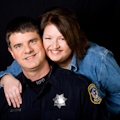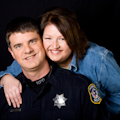December is the time of year I often start asking my clients about their goals and aspirations moving forward, what they would like to accomplish and what new habits they want to form. Hanging a new calendar signals a natural break for most of us and provides a psychological bridge from the old or obsolete, stale, and perhaps dysfunctional patterns and practices in which we’ve been stuck to opportunities for change and refreshment.
While most people make New Year’s Resolutions such pledges to betterment tend to be fleeting, emotional, oriented to specific accomplishments, or unrealistic. I focus more on generalizable, realistic, long-term goals with an eye toward positive habit formation. The difference is significant, as I can illustrate with one of the more common New Year’s Resolutions, that one to “finally get into shape!”
Resolutions are often noncommittally general (“I’m going to hit the gym a whole lot more from now on!”) or so highly specific they border on grandiose (“Six months should be plenty of time to train for that Ironman; why, back in high school, I could sometimes run almost three miles without stopping! Well, when it wasn’t too hot, anyway”). The problems with each are obvious; extremely general pledges leave too much “wriggle room” for cheating or abandonment when following through is inconvenient or too hard, and the highly specific ones either set you up for failure from the start or, if easy enough, once accomplished lead to no further lifestyle changes.
Generalizable (rather than either “overly general” or “highly specific”) and realistic goals set with an eye for sustainability and growth, on the other hand, are foundational to success. Consider this somewhat different but success-oriented approach to health and fitness:
“I’m not getting any younger and, frankly, I’m starting to feel the years more and more, so it’s time I get serious about taking care of myself better.” Here, the speaker has decided on a lifestyle change based on a real concern over looming realities and perhaps past practices.
“I’ve been studying up on nutrition and exercise a little, and have decided on some dietary changes and a few different workouts to explore.” Thought and research has gone into the goals, with openness to exploration and discovery of what will work best.
“I’ll start with cutting out fast food grab-n-gulps and start packing a healthy lunch every day, and only eating dinner out twice per week; that will help me eat less processed food.” Everyone has to eat, but we can control what we put into our bodies. Plus, there is still room for occasional indulgences.
“I’d like to get back into running so I found an App that will help me train for a 5K, and I also bought a month of Pilates classes at this studio near my house. I can go twice a week for four weeks and see if I like it.” These are examples of self-enforced partialization, or breaking a goal down into manageable, time-measured sub-goals; running Apps usually require specific and easily managed time requirements to successfully complete them, and a prepaid purchase of a specific block of the class greatly increases the likelihood it will be utilized and ingrained as a lasting practice.
“I’m also going to just move more, walking when and where I can – I’ve already bought one of those Fitbits to keep track of my steps – and, as I get into better shape, I’ll look into adding steps, workouts, and variety.” Again, taking steps to formalize the goal and how it will be measured, with incremental addition to the goal, increases the likelihood of following through.
Goal Setting and the Therapist’s List
When discussing goal setting with clients I start with this basic question:
What do you want to be different for you in 2018 that you have control over?
This helps focus goal-setting for without a clear mental picture of where you want to go it is impossible to know how to get there. From there, I focus them on the following four realms of change:
· Professional Realm For many of us, who we are is so intrinsically tied to what we do as to become nearly interchangeable. While we urge healthy detachment of the professional and personal, we completely understand and respect how self-esteem is derived from professional achievement and satisfaction. Setting professional goals is, for many of us, essential to a sense of personal value;
· Spiritual Realm Even for the nonreligious, there is often very much a spiritual realm that both guides and reflects our values, ethics, and behavior. This realm encompasses both our relationship to God (g-d, Allah, Krishna, our “Higher Power,” Buddha, the Flying Spaghetti Monster (“R-amen”), or however so you worship, if you do) and our personal self-actualization. Goals in this area may focus on prayer or service, self-fulfillment or self-realization, or self-improvement and expansion;
· Health Realm Often the most overlooked, setting health and fitness goals supports not only physical health, but also the health of the other realms. Setting health and fitness goals should be nonnegotiable, especially for law enforcement officers, and understood to be the foundation upon which the other realms are built and rely;
· Relational Realm We’ve written about this before but it can never be said enough, the key component of health, happiness, and personal fulfillment is the quality and strength of interpersonal relationships. This is also the area from which most of the suffering we see in our offices, on the law enforcement job, and, speaking truthfully, even in our own lives, comes. Relationships are the greatest source of personal satisfaction but are also fraught, and being aware of their fragility can and should prompt many of your goals toward preserving and strengthening them.
And finally, when setting and maintaining goals for my clients, I encourage them to follow four simple principles we’ve learned to follow ourselves:
· Set overall long-term goals rather than specific, simple, and easily achievable (and then quickly abandoned and forgotten) short-term goals This goes to the principle of life change rather than simple behavioral change;
· Set up a well-defined, well-designed plan for your goal achievement Establishing a plan at the outset provides structure and improves the odds of success;
· Break the plan down into daily, weekly, or monthly achievable goals By establishing a series of sub-goals that all point to the success of the primary life-changing goal, you increase your odds of success and give yourself “success points” to celebrate, keep you motivated, and propel you forward;
· Know that the creation of a habit is a 6 to 12 month process Things take time, but good things are worth the time and effort!
Happy Holidays and Happy New Year!! Please accept our best wishes as we move into this Holiday Season, and our hope that all of your goals are met!
About the Author

Michael Wasilewski
Althea Olson, LCSW and Mike Wasilewski, MSW have been married since 1994. Mike works full-time as a police officer for a large suburban Chicago agency while Althea is a social worker in private practice in Joliet & Naperville, IL. They have been popular contributors of Officer.com since 2007 writing on a wide range of topics to include officer wellness, relationships, mental health, morale, and ethics. Their writing led to them developing More Than A Cop, and traveling the country as trainers teaching “survival skills off the street.” They can be contacted at [email protected] and can be followed on Facebook or Twitter at More Than A Cop, or check out their website www.MoreThanACop.com.

Althea Olson
Althea Olson, LCSW and Mike Wasilewski, MSW have been married since 1994. Mike works full-time as a police officer for a large suburban Chicago agency while Althea is a social worker in private practice in Joliet & Naperville, IL. They have been popular contributors of Officer.com since 2007 writing on a wide range of topics to include officer wellness, relationships, mental health, morale, and ethics. Their writing led to them developing More Than A Cop, and traveling the country as trainers teaching “survival skills off the street.” They can be contacted at [email protected] and can be followed on Facebook or Twitter at More Than A Cop, or check out their website www.MoreThanACop.com.